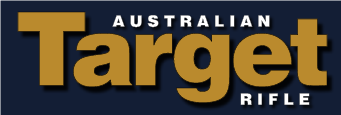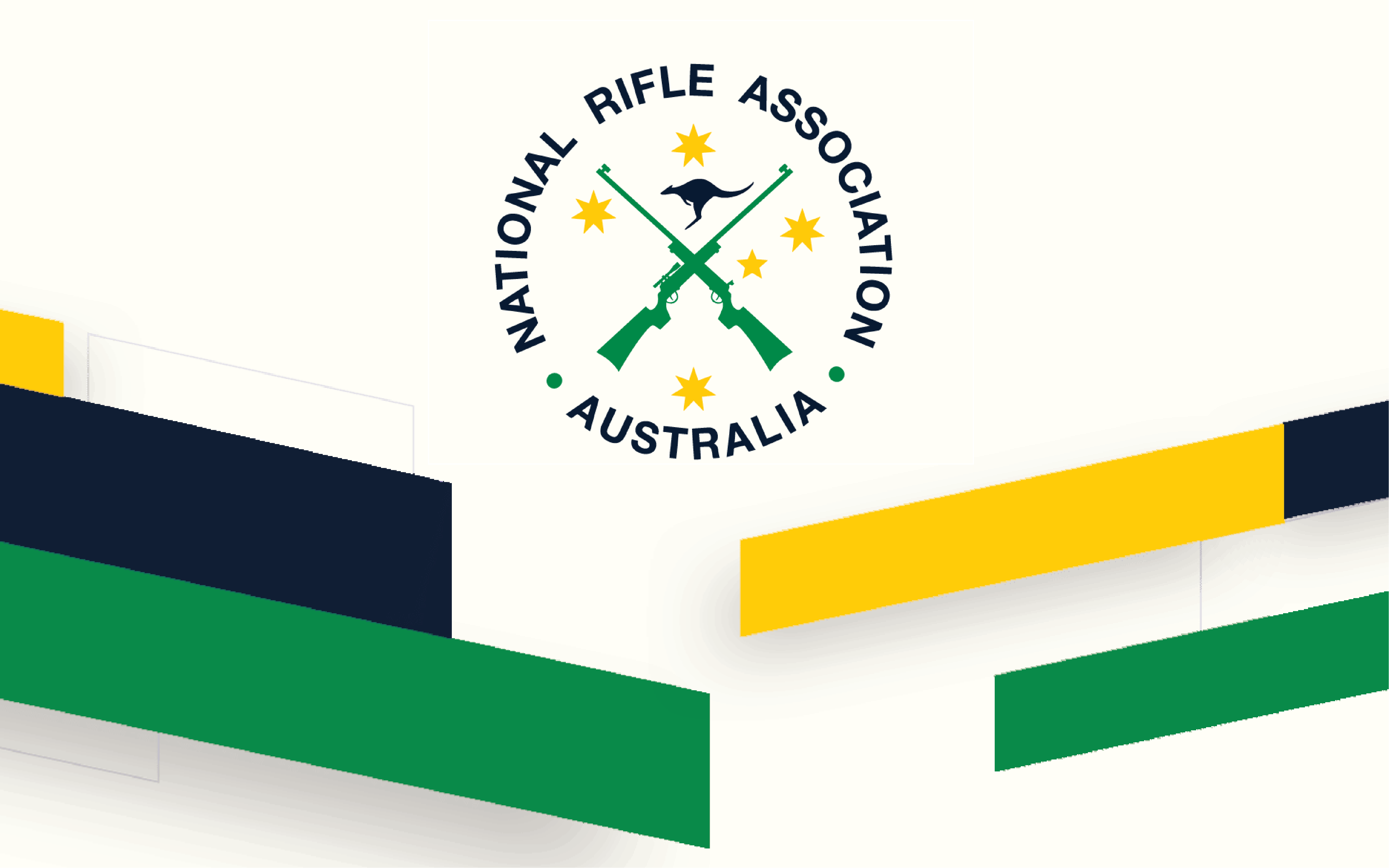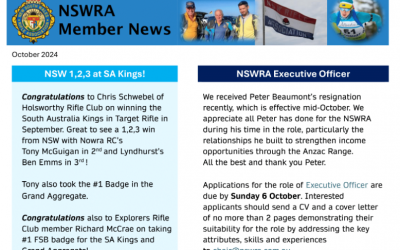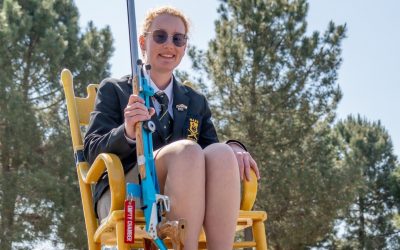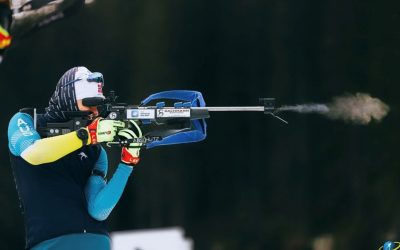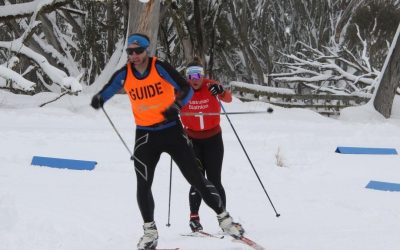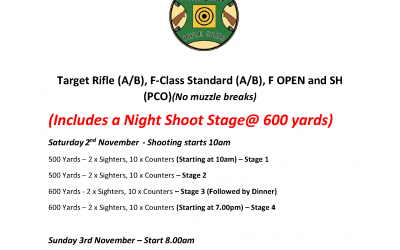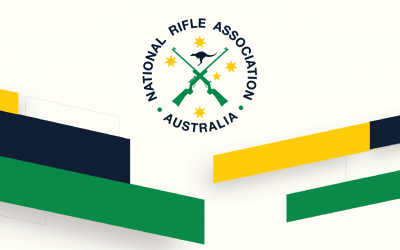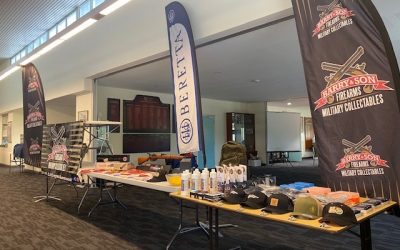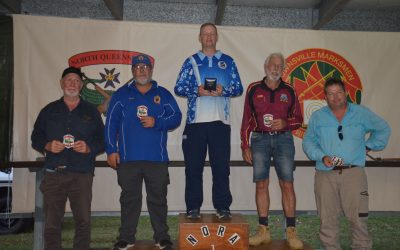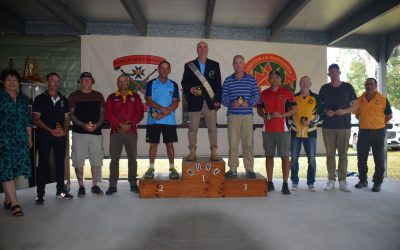From the 1850’s onwards it was perceived that the colonies should take some responsibility for their own security. The presence of the French in the Pacific, the Crimean War (1853-1856) and the Māori Wars (1845-1872) all contributed to an unease leading to the raising of unpaid volunteer forces. There was always an interest in Rifle Shooting in the colonies with a small number of Civilian Rifle Clubs also in existence.
These volunteer forces were provided with arms and ammunition by the governments of the day. The volunteers principle obligations appear to be to provide their own uniform, to drill and to shoot.
On the 3rd October 1860, an advertisement was placed in the Sydney Morning Herald[1] asking for “Gentlemen” favourable to forming an association to encourage Volunteer Corps.

“That[2] a New South Wales Rifle Association be formed having for its object the encouragement of rifle corps, and the promotion of rifle shooting throughout the colony.”
So, who were the good and the great of 1860 Sydney who assembled and were created the first office bearers of NSW Rifle Association? They were in general, men of political stature and/or wealth who had a clear idea of the concerns facing the defence of Australia at the time. It was still 10 years before the last of the British Army stationed in Australia were to leave so these Volunteers co-existed alongside the British Army for a time.

The first Rifle Meeting[i] of the New South Wales Rifle Association was held at Randwick in September 1861. Admission fees were charged to the public by the Association with five matches organised for Volunteers competing. Red flags were used to indicate the lines of fire with onlookers requested to remain outside the danger area.

It is noted that while the Victorian Rifle Association was initiated on or about the 14th of December 1860, a few months later than the NSW Association, the Victorians were able to organise their first Rifle Matches much more quickly and these were held on the last few days of December of 1860.
Patron
Sir William Thomas Denison[4] – Governor General
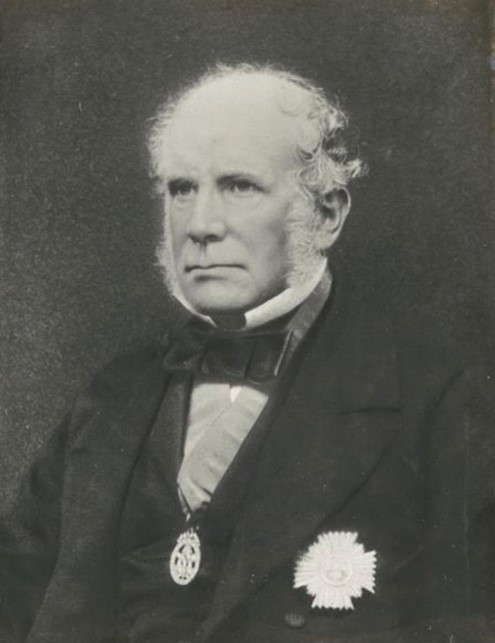
Born in 1804 in London, William was educated at Eton and later entered the Royal Military College graduating a Lieutenant in the Royal Engineers in 1826.
In 1846 he was appointed Lieutenant-Governor of Van Diemen’s Land arriving there in 1847.
One of his last official acts in Van Dieman’s Land was to endorse the name Tasmania which was granted and took effect on the 1st January 1856.
In his first year as Governor General the Crimean War turned William’s attention to strengthening Sydney’s defences that included the building of a Fort on Pinchgut Island – Fort Denison.
In 1861 William sailed to Madras to take on a new appointment of Governor of the residency of Madras a position he held until 1866 when he returned to England. His favourite pastimes are said to have been riding, fishing and shooting. Sir William died in 1871.
President of the NSW Rifle Association
Sir William Montagu Manning[5]
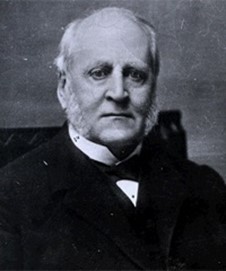
Sir William[6] was born in 1811 in Devon, England. He arrived in Australia in 1837. He was appointed soon after as a magistrate and then made Solicitor General in 1844.
He held large tracts of land in Mulgoa, Kiama and the Illawarra. And in partnership with E & R Tooth, Thomas Mort and his brothers Edye and James formed the Twofold Bay Pastoral Association holding over 400,000 acres in the Bega and Monaro Districts.
Sir William died in 1895 at his home on Edgecliff Road.
On 12 March 1868 as president of the Sydney Sailors’ Home he invited the Duke of Edinburgh to picnic at Clontarf to raise funds for the home. Manning was walking beside him when the duke was shot and believed that he had saved the prince’s life by diving for Henry O’Farrell’s pistol. He claimed his own escape from death almost to have been miraculous’.
Sir William occupied himself through life in various roles including: Barrister, Company Director, Grazier, Judge, Landowner, Magistrate, Member of Lower House, Member of Upper House, Mining Investor, Shipowner, Shipping Agent, Solicitor-General, Squatter, University Administrator, & University Chancellor.
Vice-Presidents of the NSW Rifle Association
Sir Terrance Aubrey Murray – MLA[7]
An Irishman, Sir Terrence[8] was born in 1810 at Ballysteen, Co. Limerick, Ireland. His father a Captain in the British Army moved the family to Australia in 1827. Sir Terrence acquired his first property near Collector, NSW and in 1837 purchased Yarralumla, now the site of the residence of the Governor General.
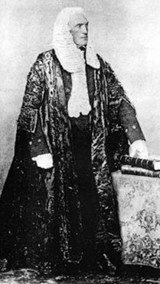
He began his political career in 1843 at a time when Irish Catholics were discriminated against.
In 1862 Sir Terrance was appointed for life to the legislative council, the Upper House of the NSW Parliament and served as its President until his death in 1873.
Sir Terrence’s interests included being an Anti-Transportationist, a Free Trade Politician, Grazier, Land Reformer, Member Of Lower House, Member Of Upper House, & Squatter.
The Hon. Edward Deas Thomson[9]
Born in 1800 in Edinburgh, Edward[i] held a position of Registrar of the Orphan Chambers in Demerara in the West Indies around 1827/28 before being moved to Clerk of the Council in New South Wales in 1829, where he also served on the Convict Assignment Board. He served under Governor’s, Richard Bourke, George Gipps and Charles FitzRoy and William Denison. Edward married the daughter of Governor Bourke in 1833.
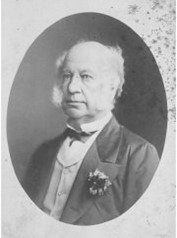
Edward Thompson held positions as: Public Servant, Colonial Secretary, member of the Upper House, University Chancellor and University Vice-Chancellor.
Numerous Colonial Secretary announcements from the Colonial Secretary’s Office are found in newspapers of the time under “By His Excellency’s Command E. Deas Thompson”.
Committee Members
Major Frederick Fanning – Merchant/Army Officer
We don’t find a lot of information about Frederick Fanning.
Frederick[11] was born in in 1821, and enlisted in the Indian Army in 1838 retiring as a Major in 1858 arriving in Sydney the same year.
Frederick was a sheep and cattle grazier and landowner mainly in the Queensland Maranoa district.
John Bayley Darvell[12] – MLA Member for Hawksbury
John Darvell was a Yorkshireman born in Felixkirk in 1809. He was educated at Eton and Trinity College in Cambridge.
Arriving in Sydney in 1839, his parents and five siblings arriving in 1840.
He was appointed a director of the Sydney Banking Co. and the Australian Banking Co. From 1839 he was admitted to the colonial bar and practised law.
John returned to England in 1865 a died in 1883.
John was involved in occupations as Barrister, Company Director, Member of the Lower House and Member of the Upper House.
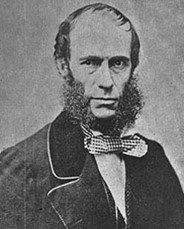
George Kilgour Ingelow – Manager of the Oriental Bank Corporation
George was born in Boston, Lincolnshire, son of a wealthy banker.
He found an appointment in India in 1845 before moving to Singapore then Sydney where he worked for the Oriental Bank. In 1859 George was the Treasurer of the Indian Relief Fund (for Calcutta).
George was also an artist and watercolourist. He was a member of the Sydney Sketching Club.
He died at his home in Sydney August 1865.
Major Thomas Wingate[13] Sketcher, Photographer and Army Officer
Thomas[14] was born in 1807 at Verdun in France, both his father and mother were being held as prisoners of war when the ship “The Biter” was wrecked at Etaples in November 1805.
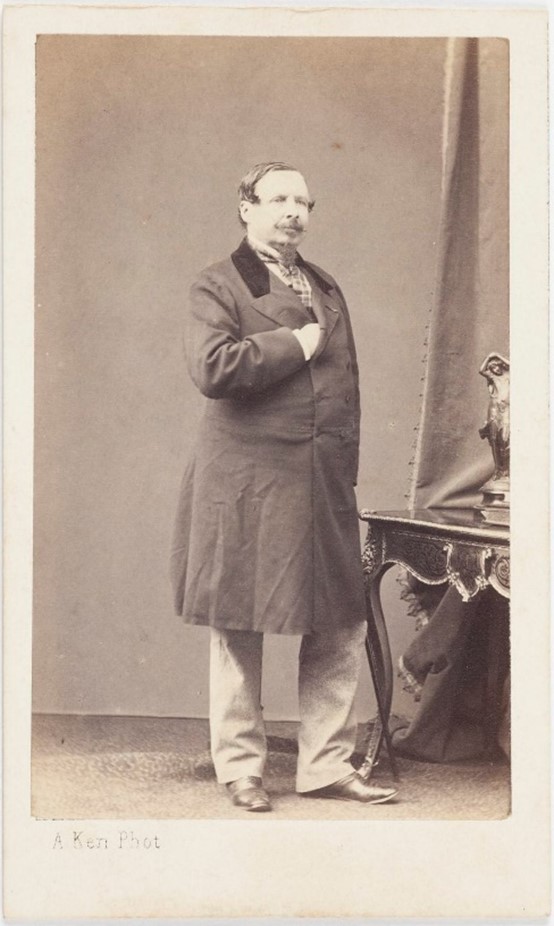
Thomas began his military career in 1826 serving in Ceylon, India and Afghanistan.
In 1851 he arrived in Sydney and in 1852 was appointed a magistrate. In 1854 he was commissioned a Major commanding the 1st New South Wales Rifle Volunteers. Thomas Wingate died in May of 1869 at Potts Point.
John Fairfax[15] – Journalist, Publisher
Born in England in 1804 John Fairfax was apprenticed as a printer and bookbinder in 1817 joining the London Chronicle in 1825. He founded his own newspaper the Leamington Spa Courier in 1828.
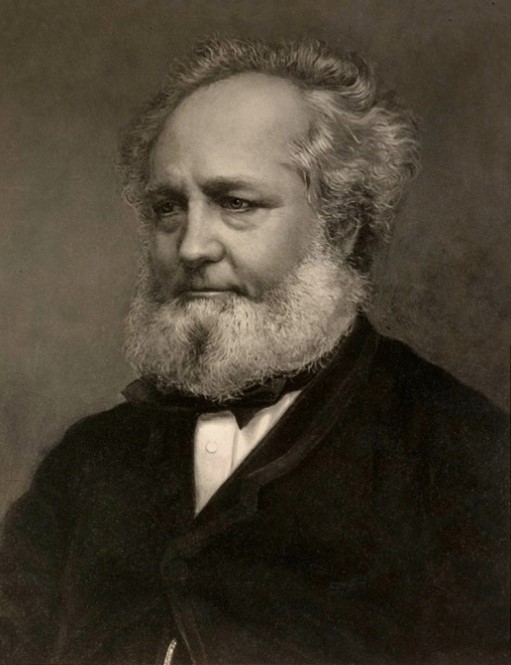
In 1838 John and wife Elizabeth arrived in Sydney. In 1839 he worked as a journalist and in 1841 partnered with Charles Kemp to purchase the Sydney Herald that became the Sydney Morning Herald in 1842.
By 1851 he was a foundation director of the Australian Mutual Provident Society, and in the 1860s a director of the Sydney Insurance Co., the New South Wales Marine Insurance Co., the Australian Joint Stock Bank and the Australian Gaslight Co. and a trustee of the Savings Bank of New South Wales. For some years president of the Young Men’s Christian Association, he was appointed in 1871 to the Council of Education. He helped to establish the Pitt Street Congregational Church where he was senior deacon. During his lifetime John was company director, journalist, librarian, Member of Upper House and well known newspaper owner.
Simeon Henry Pearse – Mayor of Randwick
Simeon Pearse was born in Randwick, Gloucestershire in 1821. He arrived in Australia with a cousin, Samuel as bounty immigrants forming a partnership as butchers.
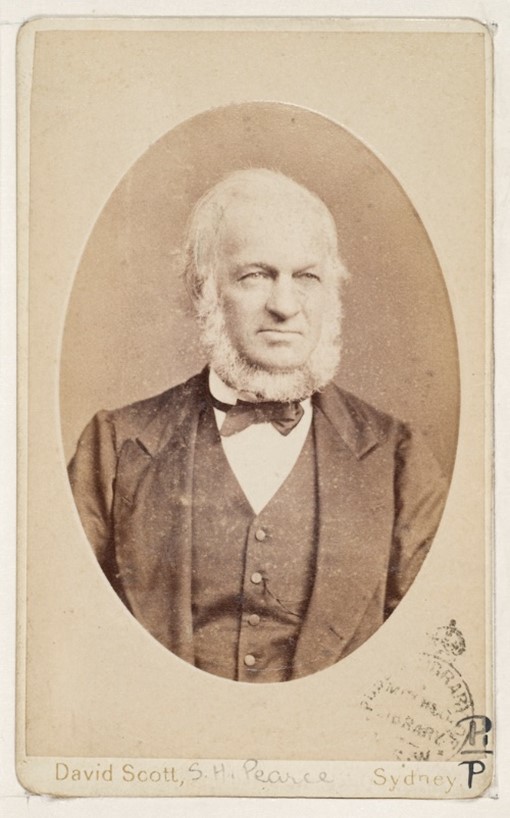
In 1847 Simeon purchased a small plot of land on the heights above Coogee naming it Randwick the area later becoming the suburb of Randwick.
Pearce supported the building in 1856 of the Randwick Asylum for Destitute Children (Prince of Wales Hospital) and was a founding director and sometime president of its board but thought the children were too well treated. He was also a director of the Sydney Infirmary and Dispensary.
Simeon occupied himself in roles such as butcher, commissioner of crown lands, land agent, land speculator, local government councillor, local government head, magistrate and public servant.
Sir William Charles Windeyer – Barrister, Judge, Politician and Social Reformer
Sir William was born in Westminster, London in 1834 and arrived in Sydney in 1835 with his parents. Educated at the Elfred Private School and The King’s School, Parramatta he gained a scholarship to be among the first undergraduates at the University of Sydney with a B.A. in 1856.

In 1860 Windeyer had been the main mover in the revival of the Volunteer Force; on 4 December he was commissioned Captain of the No. 2 company of the Sydney Battalion of the Volunteer Rifles and in 1868 was promoted Major. He was a member of the winning New South Wales rifle team in the match against Victoria in Melbourne in 1862. On the return voyage the City of Sydney was wrecked off Green Cape; no one was lost but Windeyer suffered shock and ill health
Sir William held positions as barrister, judge, Member of Lower House, and university vice-chancellor
Organisations that he was involved with included; New South Wales Bar Association, Sydney Grammar School, University of Sydney (administration), City Night Refuge and Soup Kitchen (Sydney), Discharged Prisoners’ Aid Society (NSW), State Library of New South Wales, and the Women’s College (University of Sydney).
Thomas Holt – Politician – Wool Merchant
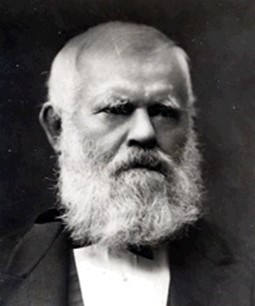
Thomas was born in 1811 at Horbury in Yorkshire and worked in his father’s wool business at age 14.
He arrived in Sydney in 1842 to become a wool buyer and became a magistrate. He was also a director of several gold-mining, insurance and railway companies. In 1856 he succeeded in entering the Legislative Assembly.
In August 1861 Thomas bought an estate extending from Botany Bay to Port Hacking and including James Cook’s landing place where he erected an obelisk in the centenary year.
We note that Thomas held positions in life as company director, free trade politician, grazier, magistrate, Member of Lower House, Member of Upper House and wool broker.
Henry Cary Dangar – Surveyor and Pastoralist
Henry Dangar was born in Port Stephens in 1830 and at age 16 went to the UK to finish his education at Trinity College, Cambridge being admitted to the Bar in 1854. In 1874 he entered politics in the Legislative Assembly as a conservative.
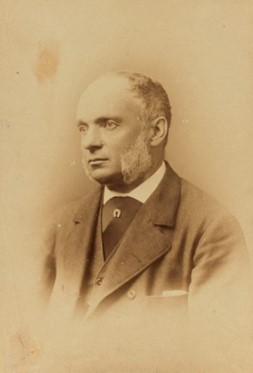
He was responsible for the sending of a New South Wales Rifle Team to Philadelphia in 1876 at the US Centenary Matches.
He was responsible for the sending of a New South Wales Rifle Team to Philadelphia in 1876 at the US Centenary Matches.
In his lifetime Henry was known as a grazier, horse breeder, Member of Lower House, Member of Upper House, racehorse breeder, racehorse owner and shooter (competitive).
Organisations he was involved with include, Dangar Brothers, Dangar Gilchrist & Co, New South Wales Academy of Art, Royal Prince Alfred Hospital (Sydney), Royal Sydney Yacht Squadron, St Paul’s College (University of Sydney), National Rifle Association of New South Wales, and the Australian Jockey Club (NSW).
James John Riley – Mayor, Penrith
We don’t find a lot of information about James Riley other than a mention of his position as Mayor and his home at Glenfield.
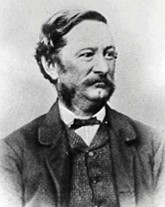
James Riley born 1821 was the first Mayor of Penrith[16] and was mainly involved in Public Affairs. The Riley family lived in Glenmore House from 1854, the house being built in 1825 by William Cox who was paymaster of the New South Wales Corps.
The house is now the Glenmore Golf Club
James died in 1882 aged 61.
Sydney Charles Burt – Australian – Auctioneer, Jockey Club Randwick
Sydney Burt is said to have been born in Sydney in 1825 and died in 1892.
In 1857 Sydney was appointed Secretary of the Australian Jockey Club.
He was involved in the sale of horses at a site in Pitt Street in Sydney from 1847 under Burt and Co’s Horse and Carriage Bazaar with daily sales by auction. He seems to have left Australia in the early 1870’s under a cloud ending up in Fiji. He was appointed in 1871 as the Premier and Minister of Finance by the white residents of Fiji. He also held the position of Attorney-General in Fiji around 1873.
William Harbottle – Captain Volunteer Rifles
We don’t find a lot of information about William Harbottle. We note him in a newspaper article[17] from September 1861 overseeing a Picnic/Rifle Match at the Manly Beach Range. The first prize was an Enfield Rifle.
Captain Harbottle tied for 4th place and lost the shoot-off to Private Beer.
James Mayn Leigh – Tobacconist, Wine Merchant
Born in Penzance, James[18] arrived in Australia under the Bounty Immigrant scheme in 1841.
In 1849 he opened his own shop on George Street, Sydney as a tobacconist and around 1854 added wine sales to his business.
Leigh was honorary treasurer of the Intercolonial Cricket Match Committee. In 1862 he was director of the Pacific Fire and Marine Insurance Company and in 1863 he was a member of the provisional committee for the Sydney Gas Company. In 1864 Leigh was elected the Chairman of the All England Eleven cricket tour to be held the following year.
James Leigh died in 1871.
William Vandermuelen Wild – MLA Camden
Born in Camden[19] in 1834, William Wild was of Irish descent. William was educated at Sydney College[20] and became a barrister and a Member of the Lower House.
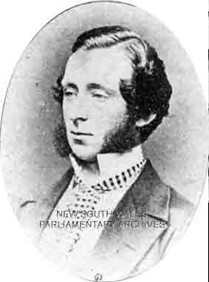
He worked at the Department of Lands Survey Office.
William died in 1861 from typhoid aged just 26.
Samuel Aaron Joseph – MLA
Born in London, 1824, Samuel arrived in Sydney in 1856 after setting up his business in New Zealand in 1843. He became Chairman of the City Bank, Sydney and director of various companies including, the Australian Mutual Provident Society and the Sydney Exchange Co.
He was President of the Sydney Chamber of Commerce in 1887-89.
Samuel took an interest in Jewish Affairs with the York Street Synagogue, and the Hebrew School and trustee of the Hebrew Section of Rookwood Cemetery. Samuel died in 1898.
Samuel Cohen – MLA for Morpeth
Samuel was born in Lambeth, London in 1812 and arrived in Australia in 1834. He started businesses in General Stores, in Maitland, Campbeltown and Sydney.
He was a member of the Board of the York Street Synagogue and the first president of the secessionist Macquarie Street Synagogue. Through his connection with the York Street Synagogue he would have known his co-Committee member Samuel Joseph.
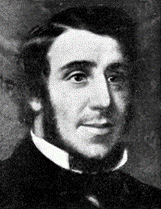
In 1860 he served in the Legislative Assembly as the member for Morpeth.
Samuel died in 1861.
Thomas Walker – Colonial Politician, Merchant Banker and Philanthropist
Born in Leith, Scotland 1804, Thomas Walker[21] came to Australia before 1822 when he joined in business Riley and Walker general merchants, Riley being his uncle.
He was made a magistrate in 1835 and in 1843 was elected as a representative of the Electoral District of Port Phillip in the first NSW legislative Council partitioning that Port Phillip should be made a separate colony in 1845. He was successful in business and president of the Bank of NSW for many years. He was well known for his benevolent activities and funded a number of institutions.
After his death in 1886, £100,000 was set aside to found the Thomas Walker Convalescent Hospital in Concord West.
Walter Lamb[22] – Businessman and Pastoralist
Born 1825 in London, William Lamb arrived in Australia in 1829 and received education and the Sydney College.
Starting work as a Clerk in his father’s firm by 1857 he and a brother were in partnership with a Charles Parbury as Lamb, Parbury and Co.
An original shareholder of Colonial Sugar Refining Co. he became its Chairman in 1880.
Appointed a Lieutenant in the Sydney Volunteer Rifles in 1854 was to rise to Vice-president of the NSW Rifle Association.
Through his life Walter found employment in areas such as canner, cattle breeder, colonial militia (Australia), company director, company manager, grazier (cattle), greyhound owner/racer, Member of Upper House as a protectionist politician.
His interests spread from business (Dangar Brothers) to NSW Academy of Art, Royal Prince Alfred Hospital, Royal Sydney Yacht Squadron, National Rifle Association of NSW, St Paul’s College at Sydney University and the Australian Jockey Club.
His second wife was Margaret, daughter of Henry Dangar Snr.
Walter died in 1906 at age 81.
Richard Jones[23] – Politician
Richard Jones[24] was born in 1816 in Liverpool, England and he died in Sydney in 1892 aged 75.
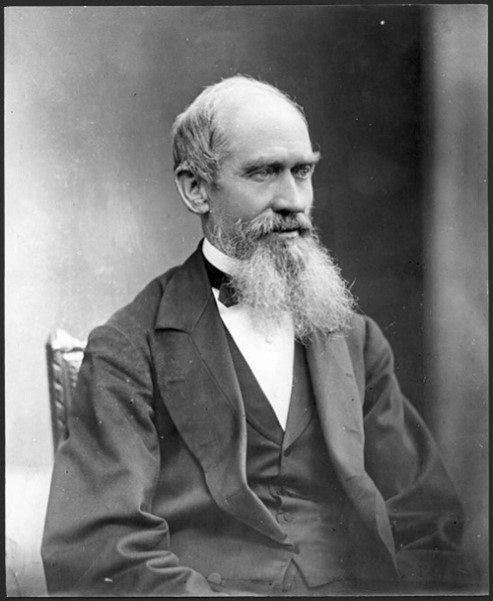
Richard and his wife arrived in Australia 1838 as Bounty Immigrants soon after he finished his apprenticeship as a printer.
He worked for an early newspaper in Sydney called the Monitor then the Australasian Chronicle. In the 1840’s Richard began taking an interest in public affairs and politics and made a good friend of Sir Henry Parkes.
He and another reporter, Thomas Tucker established a newspaper in Maitland, NSW, the Maitland Mercury and Hunter River General Advertiser.
From 1855 Richard took a stronger interest in politics and in 1856 he was elected for Durham and in 1857 was treasurer to the Cowper ministry. He was elected as representative of the Hunter electorate in 1859 and then stepped away from politics in 1860 to concentrate on his commercial interests. Richard was married twice and father to 16 children.
Herbert Harrington Brown – Politician
We don’t find a lot about Herbert’s working life however his obituary gives us some details of that and of his political life. The obituary[25] from the Dungog Chronicle: Durham and Gloucester Advertiser is quoted in full below.
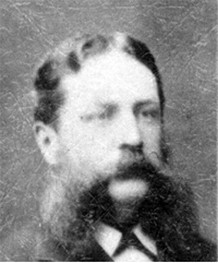
Death occurred at St. Luke’s Hospital, Sydney at 8.30 a.m. on Monday morning of Herbert Harrington Brown, ex-M.L.A., at the age of 91 years. Deceased had only been ill for 24 hours. He is survived by two sons, Bert and Sid, and four daughters, Mrs. Wells, Mrs. Lee, Miss Brown and another married daughter who resides in Queensland. The late Mr. Brown was elected to the Legislative Assembly in 1875 and followed the late William Arnold, ex-Speaker, who was drowned in the floods near Paterson. In 1898, Mr. Brown was defeated for Durham by Hon. Walter Bennett who still holds the seat in the House, Mr. Brown used to own Colstoun, Lostock and Guygallyn properties on the Paterson and has the honour of having imported the first Jerseys into N.S.W. These he got from New Zealand. He was one of the first to engage in dairying, and was also a noted breeder of ponies. A wealthy man at one time, he was, however, unable to hold his riches. As a member for the district, he was an inveterate worker. On all sides one can point to things which he obtained for the electorate, the Wallarobba Hill cutting, the iron bridge below Paterson, the bridge at Bandon Grove, etc. In the death of the late Mr. Brown, a worthy citizen has passed away.
Captain William Colburn Mayne
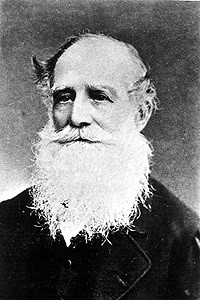
Sir William Mayne[26] was born in Wicklow, Ireland in 1808 receiving education at Trinity College, Dublin. He served in the 5th Regiment as Ensign in 1825, Lieutenant in 1826 and after the Royal Military College he was promoted Captain in 1833. After retiring from the military in 1838 William arrived in Sydney in April 1839.
He held positions as Commissioner of Crown Lands in the Wellington district (1846) and in 1851 was appointed Inspector-General of Police. In the 1856 Cowper ministry he was appointed Auditor-General. From 1864 William became the first Agent General for New South Wales in London and acted as head of the New South Wales commission for the Paris Exhibition.
In the 1860’s and 1870’s William owned a number of stations in the Darling and Leichardt districts. William was also considered a supporter of Aboriginal Rights with efforts to have areas reserved for their hunting and fishing. William Mayne died in 1902 at his home in Burwood.
[1] Sydney Morning Herald 3 October 1860
[2] The Sydney Morning Herald 6 October 1860
[3] https://trove.nla.gov.au/newspaper/article/13067863?searchTerm=nsw%20rifle%20association%20matches
[4] https://adb.anu.edu.au/biography/denison-sir-william-thomas-3394
[5] Image – https://www.parliament.nsw.gov.au/members/Pages/member-details.aspx?pk=375
[6] https://adb.anu.edu.au/biography/manning-sir-william-montagu-4150
[7] Image – https://en.wikipedia.org/wiki/Terence_Aubrey_Murray
[8] https://adb.anu.edu.au/biography/murray-sir-terence-aubrey-2498
[9] Image – https://en.wikipedia.org/wiki/Edward_Deas_Thomson
[10] https://adb.anu.edu.au/biography/thomson-sir-edward-deas-2732
[11] https://adb.anu.edu.au/biography/fanning-frederick-3894
[12] Image and bio details- https://adb.anu.edu.au/biography/darvall-sir-john-bayley-3370
[13] Image – https://first.mhnsw.au/firsthhtpictures/resultbyField.jsp?term=fashion+%28clothing%29&field=subject
[14] https://www.daao.org.au/bio/thomas-w-wingate/biography/
[15] Image and Bio Details – https://adb.anu.edu.au/biography/fairfax-john-3493
[16] https://trove.nla.gov.au/newspaper/article/249502059?searchTerm=James%20John%20Riley%2C%20mayor
[17] https://trove.nla.gov.au/newspaper/article/13063880?searchTerm=William%20Harbottle%20Captain%20Volunteer%20Rifles
[18] https://collections.museumsvictoria.com.au/articles/2106
[19] https://www.parliament.nsw.gov.au/members/Pages/member-details.aspx?pk=679
[20] https://peopleaustralia.anu.edu.au/biography/wild-william-vandermuelen-16524
[21] https://en.wikipedia.org/wiki/Thomas_Walker_(philanthropist)
[22] https://adb.anu.edu.au/biography/lamb-walter-3983
[23] Image – https://www.sl.nsw.gov.au/collection-items/richard-jones-journalist-politician-and-company-director-portrait-nd-unknown
[24] https://adb.anu.edu.au/biography/jones-richard-2281
[25] https://trove.nla.gov.au/newspaper/article/138199898?searchTerm=harrington%20brown#
[26] https://adb.anu.edu.au/biography/mayne-william-colburn-4179
